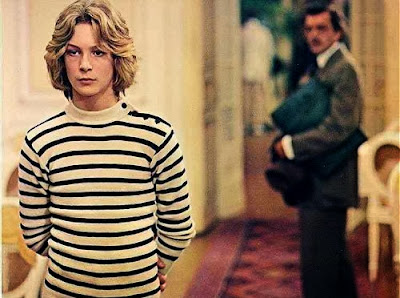How Mahler became sound upholstery
Two members of the original Third Ear Band were classically trained, Paul Minns on oboe and recorder, and Richard Coff violin and viola. With founding force Glen Sweeney on hand drums and tabla, and Mel Davis on cello they cut the bands first two legendary all-acoustic albums Alchemy and Elements in 1969 and 1970. For their equally legendary 1972 soundtrack for Roman Polanski's Macbeth, Richard Coff was replaced by another violinist from a classical background Simon House, and Royal College of Music cello graduate Paul Buckmaster joined the band*. This classical connection was reflected in the venues where the Third Ear Band played, which included the Purcell Room, Queen Elizabeth Hall, Festival Hall - where they appeared with musique concrète exponent Bernard Parmegiani - and the Royal Albert Hall
All three albums were released on EMI's newly-formed Harvest label aimed at the emerging progressive rock market. However the Third Ear Band's iconoclastic style did not sit comfortably with EMI's culture. So the band's refusal to allow the 'must haves' of reverberation and phasing added to their master tapes resulted in a stand-off with EMI's Abbey Road engineers. While back at head office the Harvest label managers were sparing with promotional support due to the perceived occult sub-agenda of the Alchemy album, a perception not helped by the band's involvement with Druids. Despite this the Third Ear Band attracted a cult following with their early albums, largely due to advocacy by influential BBC DJ John Peel who also played jew's harp on one track of Alchemy. In fairness however, the failure of these albums to crack the mass market is not surprising. Because, masterpieces as they undoubtedly are, on first hearing they can sound like a cross between the music of David Munrow and Cornelius Cardew.
In his sleeve note for Alchemy Glen Sweeney described the Third Ear Band as creating "music of its time, of course but not bound by it - still with new things to tell us". That uncanny ability to tell us new things is developed by the band's biographer Luca Chino Ferrari in Glen Sweeney's Book of Alchemies: the Life and Times of the Third Ear Band, 1967-1973.
"I'm not persuaded that the sound of a certain historical period in a certain society forecast the times and the social models to come, as the French writer Jacques Attali claimed in his landmark essay Noise: the political economy of music in 1977 (English translation 1985).
The immersion of sounds or noises we are submitted to these days seems to reflect the times - of triviality, superficiality - we live in; actually it seems to describe them perfectly - speaking of the deep social and cultural crisis into which Western countries have fallen, and the strong negative impact technology and the record industry have had on the music created and used by people.
The anonymous non-places (this suggestive expression was coined by the ethnology researcher Marc Augé) in which music is casually used as a simple sound upholstery - keeping company with consumption - suggests the idea that the re-production of sounds and the hidden possibilities of listening to music everywhere, have made the listening experience less the product of an active and conscious process and more the result of a passive and unconscious behavior.
Advertisers have understood this process and use music to persuade us "in a pleasant way" to buy, revealing our presumed needs to us.
The music that goes deep into our daily life has turned into a non-place itself; , deprived of any identity, history or relation with the time and the place of living, it becomes a sort of undefined and virtual phenomenon."
Luca Chino Ferrari originally wrote that in 1996 before technology changed the music industry for ever, and how prescient he was. Mobile technologies and streaming have moved music into non-places, where it now simply fulfils the role of sound upholstery. Music is now listened to passively and unconsciously everywhere. Great music that goes deep into our daily life has become sound upholstery in non-places - listening to Mahler while jogging is an example. But upholstery and furniture are just one component of a living environment. An even more important component is the space around the upholstery. And since the Third Ear Band was around, the sound upholstery has become bigger and bigger, which means the vital space where it is possible to push the creative envelope has become smaller and smaller.











Comments
I've posted your piece on Ghettoraga, the official TEB archive at http://ghettoraga.blogspot.com and I'm sure many TEB fans are appreciating your reflections on sounds and their implications.
Also, your blog is very interesting and I often read it.
All the best,
Luca Chino Ferrari